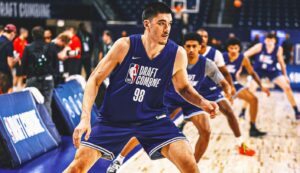the wild things thriving in our cities – Repeating Islands


Sofia Quaglia (The Guardian) writes, “From bees to burrowing owls, many species are adapting to urban environments and, with a little extra help from us, more could follow suit.” [we have only shared excerpts about the Colombian-Panamanian blue land crab, the Hispaniolan parakeets, and the smalltooth sawfish. For full article, read The Guardian.
In Sapzurro bay on the Colombia-Panama border, the blue land crab can be found scuttling around human infrastructure, burrowing in the nooks and crannies of the coastal settlement. The species, which can grow up to 15cm and ranges in colour from violet to bright cerulean blue, is considered critically endangered or vulnerable in this region, although it can be classed as invasive elsewhere. It traditionally lived in the region’s rich mangrove forests, many of which have now been urbanised – habitat loss that scientists have blamed for the crab’s decline.
But when scientists studied the distribution of the species around Sapzurro bay, they were surprised to find it was still thriving in areas where vegetation had been eliminated: crawling in pastures, banana and coconut plantations, and scurrying below concrete structures. While burrows in urban areas were fewer and smaller, it had successfully built homes along sewage canals and among houses.
A growing body of research is collecting data on species like this crustacean – threatened wildlife learning to thrive in urban spaces alongside humans.
“We often forget that we are dealing with living animals,” says José Marin Riascos, a marine ecologist at the Corporation Centre of Excellence in Marine Sciences of Colombia, who published the study on the blue land crab in April 2024. “They are not passive, they are active. If you change something, then they answer with another change.”
These findings also complicate the long-held idea that cities cannot be hotspots for animals and plants, and that conservation is something to do far away, in untouched places. “We are assuming that when humans modify an ecosystem, the habitat for the biodiversity is lost,” says Riascos. That is not always the case, he says. In some contexts, “it is just changing”.
Broadly, cities have overwhelmingly negative impacts on wildlife. On average, if a region contains 100 species, only 25 would occur inside the city, and populations can be up to 92% smaller than outside the urban area. But the chunk of wildlife that remains includes some species that are actually doing better in cities than outside them. This group can offer useful insights about how animals can adapt – or not – to human spaces, but most importantly, how humans can adapt their cities to be more wildlife-friendly.
Studies have found 66 out of 529 bird species that live in cities are found only in urban areas. In Santo Domingo, in the Dominican Republic, threatened Hispaniolan parakeets hold their ground in urban green spaces and old buildings. Throughout North America, rounded, fluffy burrowing owls have found new burrows throughout the cities. Three endangered species of cockatoos in Australia – Baudin’s black cockatoo, Carnaby’s black cockatoo, and the forest red-tailed black cockatoo – have adapted to munching on urban pine plantations. In London, peregrine falcons have found mimics of tall trees in high-rise buildings.
“This is definitely something that we’ve ignored,” says Erica Spotswood, an urban ecologist at Second Nature Ecology + Design in California. In a 2021 study published in the Journal of Bioscience, she argues that cities could perform a variety of services for surrounding wildlife.
“We created cities in places that we like, along rivers, along the coast, in alluvial plains, at the bottom of valleys,” says Spotswood, and human preferences overlap with those of many species. This means cities also end up having a wide variety of types of habitats inside them, and a lot of diversity.
Urban spaces can be refuges during periods of stress and scarcity in the wild, providing easier access to an abundant diversity of resources year round. And cities can help species escape the threats animals face in the surrounding landscape – such as providing pollinators with refuge from pesticides systematically spread throughout agricultural land. [. . .]
The smalltooth sawfish, once abundant in North American waters, is now thriving only in the urbanised coastal waters off South Florida, according to one 2020 paper. [. . .]
For full article, see https://www.theguardian.com/environment/article/2024/jun/24/crabs-cockatoos-ringtail-possums-wild-things-thriving-in-our-cities-aoe
[Shown above: Photo by Bebedi/Alamy: Threatened Hispaniolan parakeets have adapted to urban living in Santo Domingo, the Dominican Republic.]








